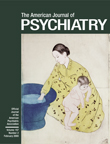Bright Light Therapy’s Effect on Postpartum Depression
Ms. A, a 33-year old woman, developed abrupt changes in her mood within 2 weeks of the birth of her first child. Her symptoms included fatigue, irritability, anxiety, social withdrawal, guilt, and increased appetite with carbohydrate craving. Even after her baby began sleeping through the night, she experienced initial insomnia and unrestorative sleep. The pregnancy had been planned and was uneventful. Labor had had to be induced because of oligohydramnios. A healthy baby was born at term. She had no previous history of depressive episodes or mood disorders. She was otherwise healthy. Ms. A delayed seeking treatment, hoping her condition would improve. Her mood, management of household responsibilities, and competence in taking care of her baby continued to deteriorate; thus she sought treatment at 5 months postpartum. She refused the option of antidepressant medication, consenting instead to a trial of phototherapy by means of a 10,000-lux light box for 30 minutes between 7:00 a.m. and 9:00 a.m. daily. Her baseline Hamilton Rating Scale for Depression score (29 items) was 29; it decreased to 18 after 2 weeks of treatment with light therapy. After 4 weeks of treatment, her score decreased to 11.Ms. B, a 27-year old woman, experienced an abrupt worsening of her anxious and depressed mood, initial and middle insomnia, anergia, fatigue, and an overwhelmed feeling 1 week after the birth of her second child. The strained relationship with her husband was felt to be the precipitant for her dysphoric feelings during pregnancy, but her mood change had not progressed sufficiently to warrant a diagnosis of major depression. Delivery of a healthy baby was at term after a 28-hour labor. Ms. B was otherwise medically healthy. She refused treatment with antidepressant medication. Conjoint therapy did not reduce her symptoms and hence was discontinued after 1 month. At that time, she accepted a trial of bright light therapy by means of a 10,000-lux light box for 30 minutes between 7:00 a.m. and 9:30 a.m. daily. Her Hamilton depression scale score (29 items) was 28 at baseline; it decreased to 16 after 10 days of treatment, and after 4 weeks, her score was 12.
References
Information & Authors
Information
Published In
History
Authors
Metrics & Citations
Metrics
Citations
Export Citations
If you have the appropriate software installed, you can download article citation data to the citation manager of your choice. Simply select your manager software from the list below and click Download.
For more information or tips please see 'Downloading to a citation manager' in the Help menu.
There are no citations for this item
View Options
View options
PDF/ePub
View PDF/ePubGet Access
Login options
Already a subscriber? Access your subscription through your login credentials or your institution for full access to this article.
Personal login Institutional Login Open Athens loginNot a subscriber?
PsychiatryOnline subscription options offer access to the DSM-5-TR® library, books, journals, CME, and patient resources. This all-in-one virtual library provides psychiatrists and mental health professionals with key resources for diagnosis, treatment, research, and professional development.
Need more help? PsychiatryOnline Customer Service may be reached by emailing [email protected] or by calling 800-368-5777 (in the U.S.) or 703-907-7322 (outside the U.S.).

